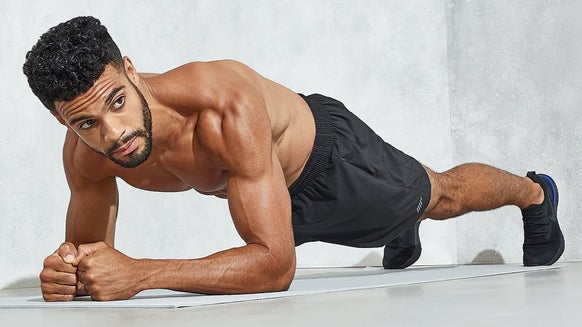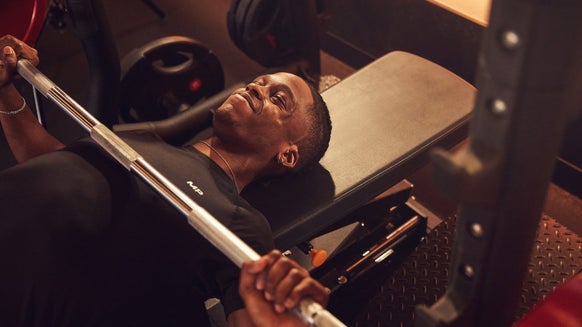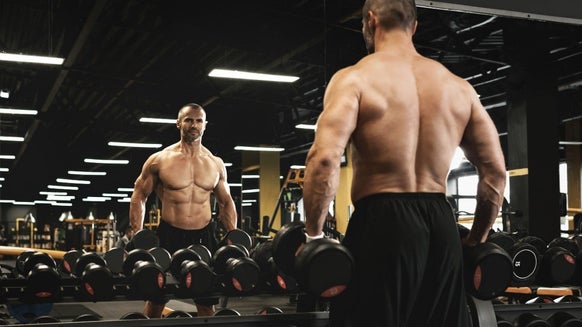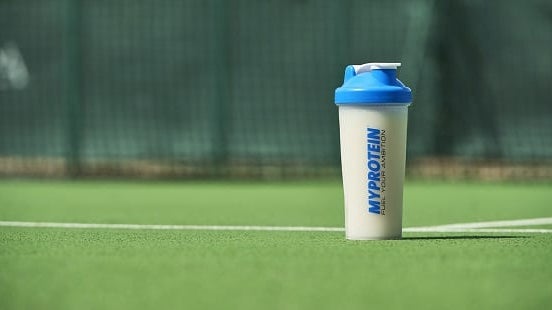By Myprotein Writer |
Jamie Wykes Hobday
If you're looking to develop an all round accomplished physique, then there is no doubt about it, the shoulders are an absolute focal point. The shoulders give the body that wide appearance and also make the hips/waist appear smaller, so they are certainly to be considered by both males and females in the gym.
Shoulders | 3 parts
1) The medial/lateral deltoid (side)
2) The anterior deltoid (front)
3) The posterior deltoid (rear)
When training the shoulders it is vital that you target all three heads.
Doing so will help you to achieve an all round beneficial shoulder workout.
The Dumbbell Lateral Raise |
Benefits
The medial deltoid or otherwise known as the lateral head of the shoulder, is perhaps the most commonly trained part of the shoulder. Developing this part of the shoulder will give the shoulders a bulbous appearance and will carve out an impressive separation between the biceps and the triceps, therefore creating an image whereby the arms are bigger and more defined than they may well be.
An exercise that is massively effective in developing the lateral head of the shoulder is the lateral raise.
When performed correctly, dumbbell raises can develop the lateral head of the shoulder so much so that you may as well be wearing a set of shoulder pads! Here are the key benefits of the dumbbell lateral raise;
? Isolation Movement
An isolation movement is an exercise where there is only one joint movement and very few muscles involved. As opposed to a compound movement which involves more than one joint movement and a large variety of muscles involved. The lateral raise is an isolation movement due to the fact it only requires movement at the shoulder joint and it isolates the lateral head of the shoulder joint.
Benefits of isolation movements include; easy to learn for beginners, safe, can single out injured muscles for rehabilitation, can even out muscular imbalances from a health perspective and an aesthetic perspective also.
? Application of Stabiliser Muscles
Stabiliser muscles regularly play an underestimated importance in our everyday training patterns. Stabilisers are the muscles that will prevent supporting joints not being in an optimal position surrounding the working muscles. In short, the stabiliser muscles will keep your body stable during any isometric contracting movement you perform. Throughout the lateral raise, many stabilising muscles such as the levator scapula, mid trapezius and the wrist extensors. Three! Yes three, stabilising muscles applied in an isolation movement!
? Plane of Movement
There are three planes of movement in which we can move; the sagittal plane, the horizontal plane and the frontal plane. The frontal plane is a vertical plane that divides the body into a posterior and an anterior portion. The lateral raise is one of few exercises (others being wide grip pull ups, wide grip pull downs etc) that incorporates the frontal plane. Due to the fact that our body is constantly moving in multidirectional movement patterns, it is important that no plane, including the frontal plane, is neglected during training. Stay functional wherever possible during training!
? Variation Galore
Like most exercises in a training program, they do not have to be boring! There are ways to spice things up and make your training more varied! With the dumbbell lateral raise, interesting variations can be conjured such as the bi lateral cable raise, seated dumbbell raises, partial dumbbell raises allowing more stimulus to be applied or even dumbbell isolation lateral holds. Furthermore, the seated dumbbell lateral raise is a top variant as it prevents any momentum and swinging happening and keeps constant tension on the deltoid at all times.
? Uni-Lateral
A uni-lateral exercise is a movement that will only require one side of the body to be applied throughout, for example; single leg split squats, single-arm dumbbell row and in this case; the single-arm lateral raise. Uni lateral exercises should be a vital component to any training regime and everyone should try to incorporate at least one uni lateral movement for every session they do. Uni lateral exercises can strengthen stabilising muscles, improve muscular imbalances and also improve the body's actual balance and stability.
The Dumbbell Lateral Raise |
How to Perform
? Whilst standing up right and head facing forwards, grip one dumbbell in each hand.
? Ensure that your palms are facing towards your torso.
? Without swinging or using any momentum, elevate the dumbbells to the side. Whilst performing the lifting part of the movement, exhale your breath completely. Whilst the dumbbells are being lifted as part of the movement, a slight flexion is allowed in the elbow. The dumbbells should be continuously lifted up until the arms are corresponding to the floor.
? At the top of the movement, your hands should be facing downwards in the pronated position. (Pronated = Hands Facing downwards, Supinated = Hands facing upwards kind of like holding a bowl of soup… Easy way to remember it, right!?)
? Once the dumbbells are parallel to the floor, keeping your body straight and head facing forwards; squeeze the applied shoulders and pause for 1-2 seconds.
? As this part of the movement has been completed, inhale your breath whilst slowly releasing the tension and lowering the dumbbells down to their starting position.
Training Implications
Warm-Up
Upper Body
2 x 10 Each Arm Cable External/Internal Rotations (A suitable weight is usually circa 10% of your bench press weight)
2 x 10 Rope Face-pulls
Shoulder Mobility Movements
The Workout
| Exercise | Sets & Reps |
| Swissball Dumbbell Arnold Press | 3 x 8-12 |
| Seated Heavy Dumbbell Partial | 3 x 15 |
| Dumbbell Lateral Raises | 3 x 15 |
| Single Arm Cable Lateral Raises | 3x12 Each Arm |
Post-Workout
Upper Body
Focusing on the shoulder joint and in particular the rotator cuffs. Apply some injury rehabilitation movements including rotator cuff rotations and shoulder joint extensions/flexions.
The Dumbbell Lateral Raise |
Common Mistakes
? Using too much momentum
Swinging too much will take the tension away from the supposedly isolated deltoid and instead place tension on the surrounding muscles such as the arms, traps or chest. This leads us swiftly to the next mistake. Furthermore, swinging will cause injury and most likely lower back injury. To prevent this, reduce the weight.
? Performing only standing
Too often, gym users think that the lateral raise MUST be performed standing and therefore there is a strong likelihood that they will swing too much and use too much momentum when it is not required! By sitting down and performing the exercise, the upright bench is preventing the person from swinging back and fourth throughout.
? Lifting the dumbbells too high
Ensure that your arms are lifted parallel and no higher, if the dumbbells are lifted too high, then the tension will be shifted from the deltoids and onto the trapezius.
? Not adding variation
Don’t ever feel that your training is boring, when it is boring you, then stop - change it up now and again.
Whether it be the rep range, sets, style of exercise, equipment used, tempo. Keep your training varied, as long as progressive overload is occurring then there is no need for occasional variation to take place.
How To Recap |
Dumbbell Lateral Raise
1) Stand up right, facing forwards, grip one dumbbell in each hand. Ensure palms are facing inwards.
2) Elevate the dumbbells to the side without swinging or gaining momentum. Continue to do so until the arms are then parallel to the floor.
3) Hands should be facing downwards in a pronated position. Squeeze at the top of the movement before releasing slowly to the starting position.
4) Ensure breathing is efficient with an inhale on the lowering phase and exhale on the exertion (lifting) phase.






